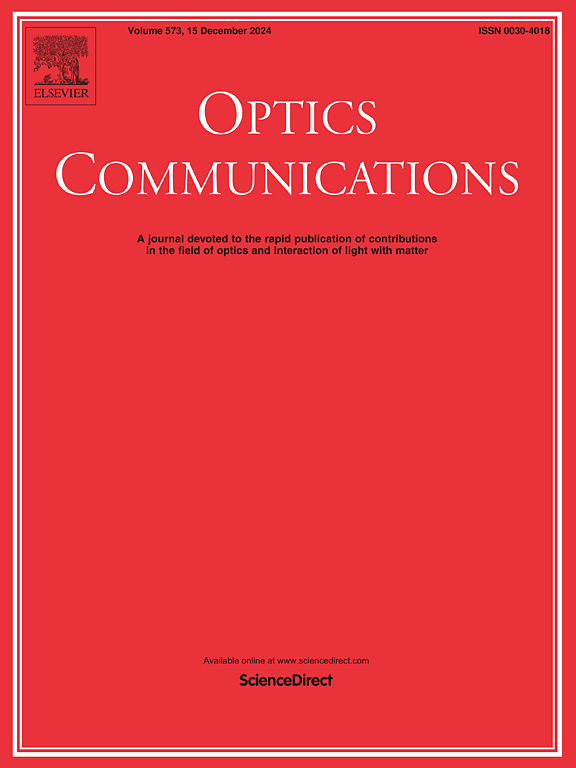Active control of polarization state in terahertz metalens
IF 2.2
3区 物理与天体物理
Q2 OPTICS
引用次数: 0
Abstract
Metalens shows unprecendented capability in manipulating the propagation of electromagnetic wave, and has much more potential in light focusing, imaging, etc. than the conventional bulky lens. However, since the light refraction of metalens is caused by the phase discontinuity over the spatial phase responses, numerous efforts should be devoted into the design of every metastructure to meet the phase demand, which makes it challenging to achieve tunable metalenses. Here, we propose several terahertz (THz) metalenses with polarization states continuously tunable at their focal points as the external optical pump varies. Every metastructure of these metalenses contains two hybrid circular split ring resonators (CSRRs) composed of Si and Au, respectively. It is shown that the electromagnetic response of the hybrid CSRRs can be split into two orthogonal Pancharatnam-Berry phase modes, which are controlled by the rotation angles of Si and Au-CSRRs. Under this theory, THz metalenses with single or multiple reconfigurable linear polarized (LP) focal points are designed and simulated. By varying the Si conductivity, the polarization angle of LP THz wave at the focal point can continuously rotate from the initial angle to the designed one. Our design of metalens paves a new way for tunable metasurfaces.
求助全文
约1分钟内获得全文
求助全文
来源期刊

Optics Communications
物理-光学
CiteScore
5.10
自引率
8.30%
发文量
681
审稿时长
38 days
期刊介绍:
Optics Communications invites original and timely contributions containing new results in various fields of optics and photonics. The journal considers theoretical and experimental research in areas ranging from the fundamental properties of light to technological applications. Topics covered include classical and quantum optics, optical physics and light-matter interactions, lasers, imaging, guided-wave optics and optical information processing. Manuscripts should offer clear evidence of novelty and significance. Papers concentrating on mathematical and computational issues, with limited connection to optics, are not suitable for publication in the Journal. Similarly, small technical advances, or papers concerned only with engineering applications or issues of materials science fall outside the journal scope.
 求助内容:
求助内容: 应助结果提醒方式:
应助结果提醒方式:


